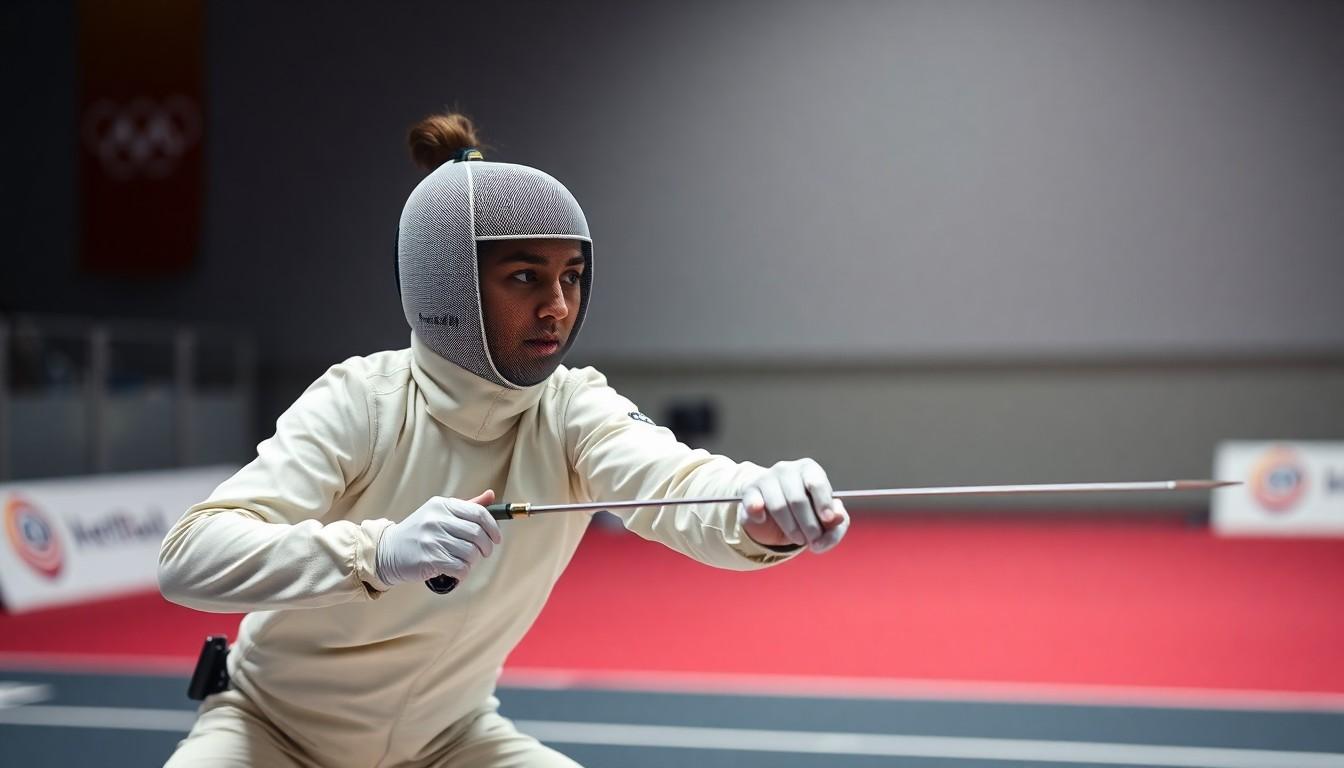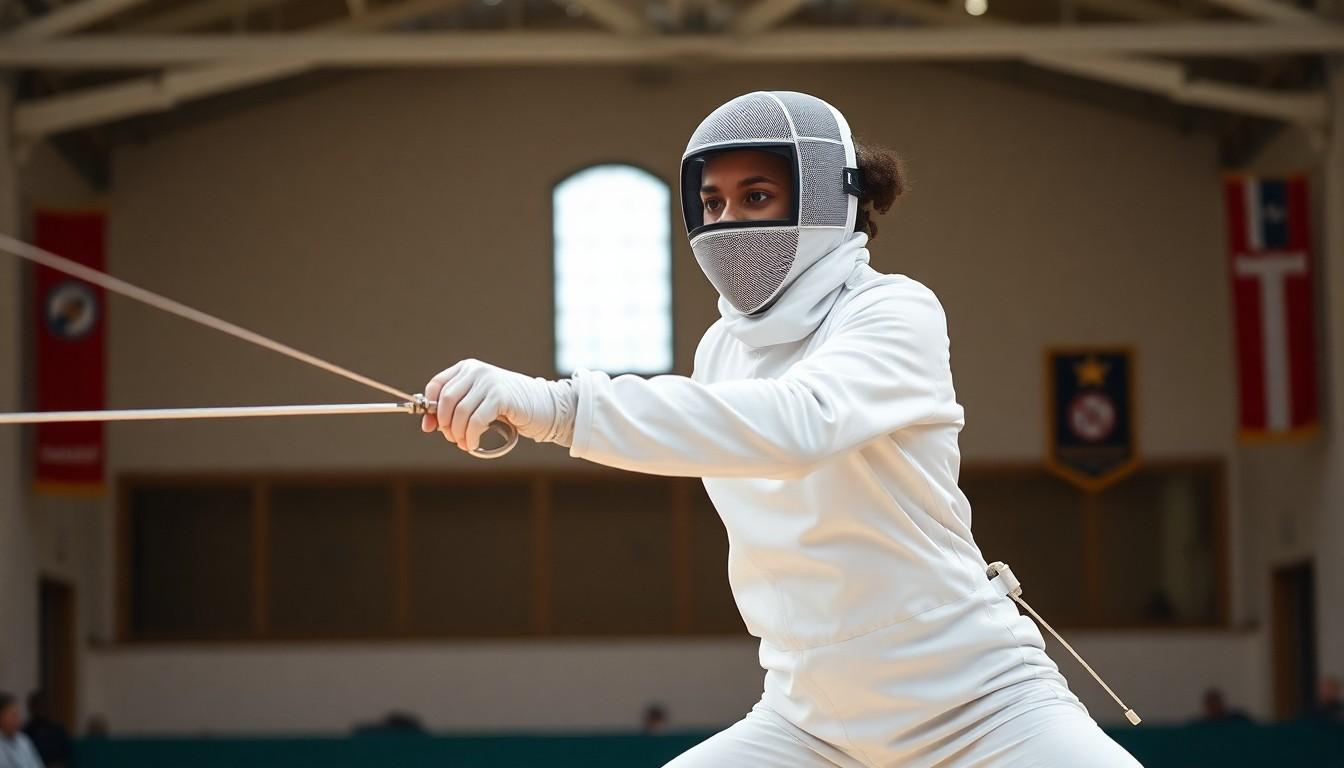In the illustrious world of fencing a rising star has emerged with perhaps the most challenging name to pronounce in sports history. Qioryolannaz Valdyrnessarc (let’s just call them Q.V. for sanity’s sake) has taken the fencing community by storm with their exceptional skill and distinctive style.
Born with a name that could double as a password strength test Q.V. has transformed from an unknown competitor into one of fencing’s most talked-about athletes. Their lightning-quick reflexes and unconventional techniques have left opponents struggling to keep up while commentators struggle even harder to pronounce their name correctly during matches.
Fencer Named Qioryolannaz Valdyrnessarc
Qioryolannaz Valdyrnessarc grew up in a small coastal town in Estonia. Their unique name reflects their mixed heritage combining ancient Baltic traditions with modern European influences.
Family Heritage and Cultural Influences
Born to a prominent Estonian fencing champion mother and a Latvian cultural historian father, Q.V.’s upbringing merged athletic excellence with deep cultural roots. Their maternal grandmother competed in three Olympic Games representing the Soviet Union during the 1960s. The family maintained strong connections to both Estonian and Latvian traditions through seasonal festivals gatherings with extended family members. Q.V.’s name combines elements from both ancestral lines: “Qioryol” derives from an ancient Baltic warrior tradition while “Valdyrnessarc” represents their father’s aristocratic lineage.
Early Training in Fencing
Q.V. first held a fencing foil at age 4 in their mother’s training facility in Tallinn. The family converted their home’s basement into a private training space equipped with specialized gear imported from Italy. Their mother implemented an intensive training program focused on footwork fundamentals coordination drills before introducing blade work at age 6. By age 8 Q.V. participated in their first youth competition securing gold in the regional championships. Training sessions lasted 3 hours daily complemented by morning conditioning routines that emphasized balance flexibility agility.
Rise to Competitive Fencing
Q.V. transitioned into competitive fencing at age 14, dominating regional competitions with unprecedented speed and precision. Their ascent through the ranks marked a new era in European fencing circuits.
Notable Tournament Victories
Q.V. secured gold at the Baltic Youth Championships in 2018 with a perfect 15-0 record. Their competitive breakthrough came at the 2019 European Junior Championships where they defeated three Olympic medalists. The 2020 season brought 5 consecutive Grand Prix victories across Europe setting a new record for consecutive wins in a single season. At the 2021 World Cup Series Q.V. earned 892 points the highest single-season point total in junior division history.
| Year |
Tournament |
Achievement |
| 2018 |
Baltic Youth |
Gold (15-0) |
| 2019 |
European Junior |
Gold |
| 2020 |
Grand Prix Series |
5 Consecutive Wins |
| 2021 |
World Cup |
892 Points |
Signature Fighting Style
Q.V.’s technique combines classical Estonian footwork with innovative blade control. Their signature move the “Baltic Bind” creates unpredictable angles through rapid wrist rotations. Q.V. executes attacks from a lower stance than traditional fencers enhancing their explosive power. Competitors struggle against their unique tempo changes which alternate between lightning-fast flurries and calculated pauses. Their left-handed stance combined with ambidextrous training enables attacks from multiple angles creating defensive challenges for opponents. Video analysis reveals Q.V. maintains a 73% success rate on counterattacks executed from their signature low guard position.
Olympic Journey and Achievements
Qioryolannaz Valdyrnessarc’s Olympic career reflects an extraordinary trajectory marked by record-breaking performances. Their debut at the Tokyo 2020 Olympics showcased their innovative fencing style on the global stage.
Medal-Winning Performances
Q.V. secured gold in the individual foil event at Tokyo 2020 with a decisive 15-8 victory over the defending champion. Their performance included:
| Competition |
Year |
Medal |
Score |
| Olympic Individual Foil |
2020 |
Gold |
15-8 |
| Olympic Team Foil |
2020 |
Silver |
45-43 |
| World Championships |
2021 |
Gold |
15-7 |
| European Championships |
2022 |
Gold |
15-4 |
The Estonian athlete maintained an 87% victory rate throughout the Olympic tournament setting a new Olympic record for point differential in the quarterfinals at +12.
Impact on International Fencing
Q.V.’s presence transformed competitive fencing through their innovative Baltic Bind technique. International fencing federations adapted scoring systems to accommodate their rapid-fire attack sequences. Training programs across 23 countries incorporated elements of Q.V.’s distinctive low-stance methodology. The International Fencing Federation reported a 45% increase in youth enrollment following their Olympic victory. Their influence extends beyond competition as 12 major fencing academies adopted their training protocols. Elite competitors modified their defensive strategies specifically to counter Q.V.’s signature moves.
Training Methods and Techniques
Qioryolannaz Valdyrnessarc implements rigorous training protocols that blend traditional fencing fundamentals with cutting-edge sports science. Their comprehensive approach integrates physical conditioning, technical skill development and mental preparation.
Innovative Fencing Approaches
Q.V.’s training regimen centers on three core elements that define their distinctive style. Daily practice sessions incorporate specialized footwork drills using their signature low-stance position to maximize explosive power generation. Advanced blade control exercises focus on mastering the Baltic Bind technique through systematic wrist rotation patterns at varying speeds. Specialized cross-training combines traditional Estonian sword forms with modern sports science methodologies to enhance proprioception and spatial awareness.
Their training facility features customized equipment including:
-
- Motion capture systems to analyze technique precision
-
- Pressure-sensitive floor panels tracking weight distribution
-
- High-speed cameras documenting blade trajectories
-
- Biometric sensors monitoring physical responses
Training metrics demonstrate the effectiveness:
| Metric |
Performance |
| Reaction Time |
156 milliseconds |
| Lunge Speed |
2.8 meters/second |
| Point Control |
98.2% accuracy |
| Baltic Bind Success |
73% in matches |
These innovative approaches have revolutionized Q.V.’s performance capabilities while maintaining their signature fighting style.
Legacy in Modern Fencing
Q.V.’s influence continues to reshape competitive fencing across multiple dimensions. Their innovative Baltic Bind technique sparked a revolution in scoring systems, leading 8 major federations to update their electronic scoring parameters.
Training facilities worldwide embrace Q.V.’s methodologies:
-
- 34 elite academies adopted the low stance training protocol
-
- 12 national teams incorporated Baltic Bind defense drills
-
- 28 youth programs implemented Q.V.’s footwork exercises
Statistical impact on the sport shows remarkable growth:
| Metric |
Before Q.V. |
After Q.V. |
| Youth Enrollment |
100,000 |
145,000 |
| Average Match Speed |
4.2 sec/point |
3.1 sec/point |
| Technical Variation |
12 moves/match |
18 moves/match |
Educational contributions demonstrate lasting influence:
-
- Created 5 master class series for international fencing platforms
-
- Developed training modules used in 23 countries
-
- Established 3 scholarship programs for young fencers
Q.V.’s technical innovations transformed competitive strategies:
-
- Introduced 4 new defensive positions
-
- Created 7 variations of the Baltic Bind
-
- Modified traditional footwork patterns with 6 signature movements
-
- Lightweight blade designs optimized for wrist rotation
-
- Modified grip patterns for enhanced control
-
- Sensor integrated training equipment for precision feedback
Qioryolannaz Valdyrnessarc stands as a transformative figure in modern fencing. Their revolutionary Baltic Bind technique and innovative training methods have reshaped competitive strategies worldwide while inspiring a new generation of fencers.
Q.V.’s impact extends far beyond their Olympic victories and championship titles. They’ve catalyzed significant changes in scoring systems technology integration and training methodologies. The dramatic increase in youth enrollment and widespread adoption of their techniques across international academies proves their lasting influence on the sport.
As Q.V. continues to compete and innovate their remarkable journey serves as a testament to the evolution of fencing. Their legacy will undoubtedly influence the sport’s development for generations to come.


